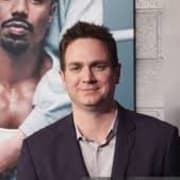There's One Main Reason the NBA Is Set to Return So Quickly
Are you ready for some basketball?
It went away for a minute … seriously.
Just over two months after the confetti fell in an empty arena to celebrate the Lakers championship, the NBA will return to the floor. On Thursday the NBA players union tentatively approved a Dec. 22 start date, paving the way for a 72-game season—and the shortest offseason in NBA history.
Those surprised this proposal sailed so effortlessly through the union ranks need only point to the public comments. Of Michele Roberts, who for months suggested to SI and others that a 2020 restart was unlikely. To Danny Green, the Lakers guard who scoffed at the idea of restarting the season in December, suggesting his teammate, LeBron James, would sit out until January.
Those not surprised point to one variable: Money, hundreds of millions of dollars, which the league says it will lose if the season were to be pushed back another month. The NBA struck an optimistic tone about the possibility of getting fans into arenas next season, citing a vaccine and the development of rapid testing. Neither are where the NBA—or anyone, really—hoped they would be, which for the league meant prioritizing television revenue. To do that, the season needed to be as long as possible.
There are other variables, of course. The NBA desperately wants to get off the floor by mid-July, in part to avoid competing with the Olympics, in part to get back on a traditional October-June schedule for the 2021–22 season. This accomplishes that. In the approved proposal, the regular season will end in mid-May and the Finals will stretch only into the third week in July. The league also needs to bake in as much time as possible to account for the inevitable need to reschedule games that are impacted by the coronavirus.
But, really—it’s about the money. It’s always about the money.
This solution is unfair to the Lakers, a veteran-heavy team that will have six weeks of rest before training camps open in early December. (I’d say it was unfair to the Heat, but Miami strikes me as the kind of team that was holding minicamps before Halloween.) The Lakers spent 3 ½ months cooped up in the NBA bubble. It was stressful, both on the court and off. They deserve a longer break.
But this isn’t about the Lakers. Or the Heat. Or the Celtics or Nuggets, whose seasons ended in late September. For many teams, this offseason has been interminably long. Eight teams have been off since March. Another six saw their seasons end in late July. Eight more were done by early September. The Lakers are the most powerful team in the NBA, with LeBron its most powerful player. But the numbers for pushing the start into January don’t add up.
What’s interesting isn’t that the NBA is rushing a return. It’s how the league will come back. The bubble was challenging. It was also an unqualified success. No players tested positive for COVID-19. No games were interrupted for health reasons. The weather was muggy, the food questionable, and there are only so many games of pickleball you can play. But it worked. Returning to one location for a full season was unrealistic—the union would never go for it—but there was chatter on GM calls about regional bubbles that would quarantine teams for a month at a time.
The NBA isn’t doing that. They are going to play in-market—where the Raptors, who, like baseball’s Blue Jays, will have trouble getting Canada to approve restarting in Toronto, will play is up in the air—in empty(ish) venues. The thinking is that some states (Texas, Florida) will open up indoor venues more quickly than others, offering a potentially valuable new revenue stream.
But there are risks with that. Big risks. The NBA will reduce its travel next season, but teams will still jet around the country for the better part of eight months. That’s eight months on planes … on buses … in hotel rooms … in arenas. They will be asked to stay indoors, to avoid restaurants, bars and public places. That won’t be easy for a league of largely twentysomethings.
They will attempt all this with the pandemic raging harder than ever before. More than 120,000 cases of coronavirus were reported on Thursday, a U.S. record. It’s the first time the country has exceed 110,000 in a day. Growth in cases is growing exponentially. Hospitalizations are up. The death toll continues to climb. We are not, in any way, shape or form, rounding the corner. And the holidays threaten to make the landscape significantly worse.
The NBA will attempt to return in the middle of that, which poses all kinds of problems. Infections among players, coaches or staffers is not only possible, but likely. Will the league postpone games with one infection? What about facilities? The NFL has navigated coronavirus issues well, but it plays weekly, with limited travel. MLB finished its season, but baseball is a game played at a social distance. COVID-19 could spread quickly among NBA players in close contact. It was beginning to back in March before the league shut down.
The NBA will be prepared, of course. The league and union have worked seamlessly to resolve many key issues—that the NBA and union were able to come to a tentative agreement so quickly is remarkable, and a testament to the strength of the relationship—so expect there to be contingency plans in place. One of them should be a bubble, which may be the only way to ensure a credibly completed season.
So welcome back, NBA.
Not that we had much time to miss you.
